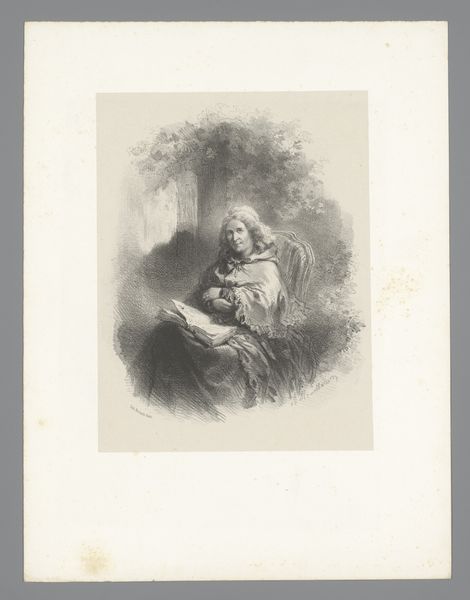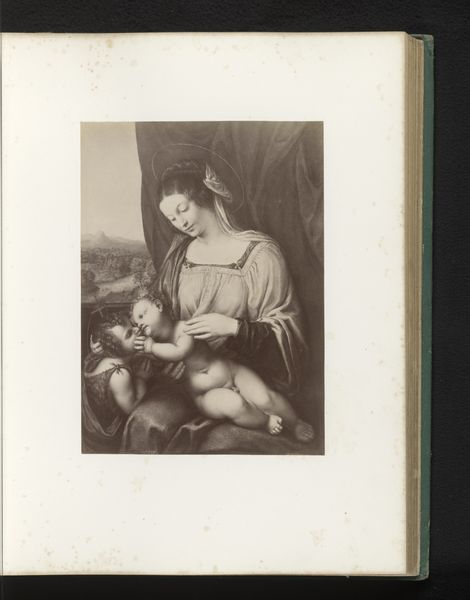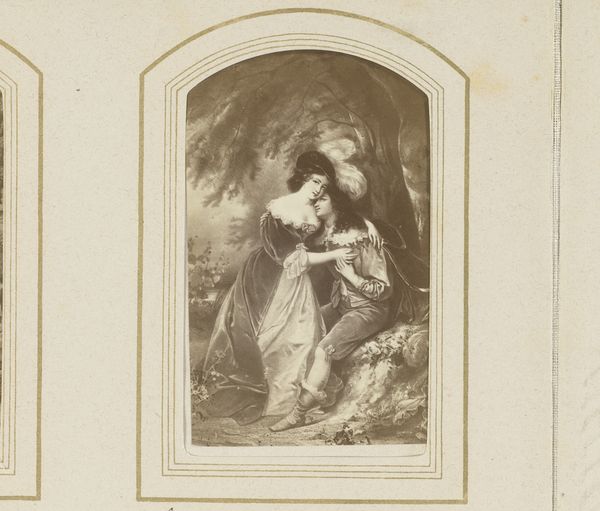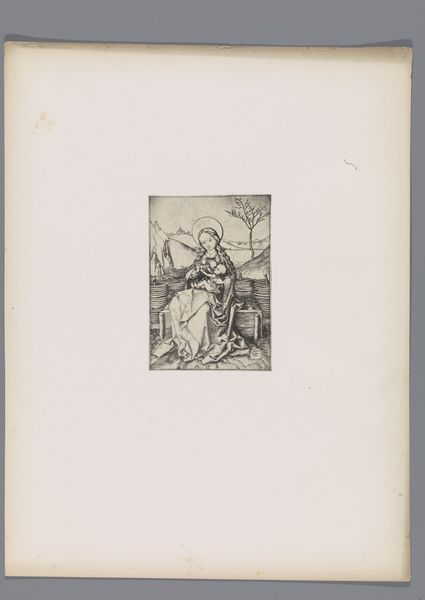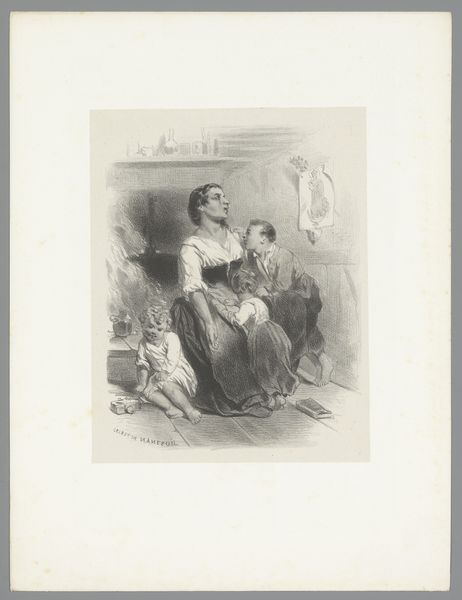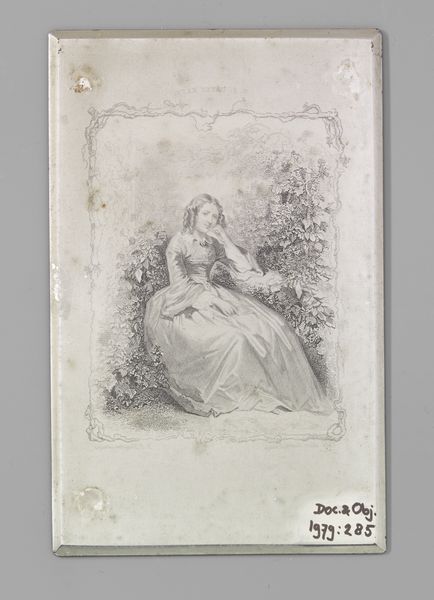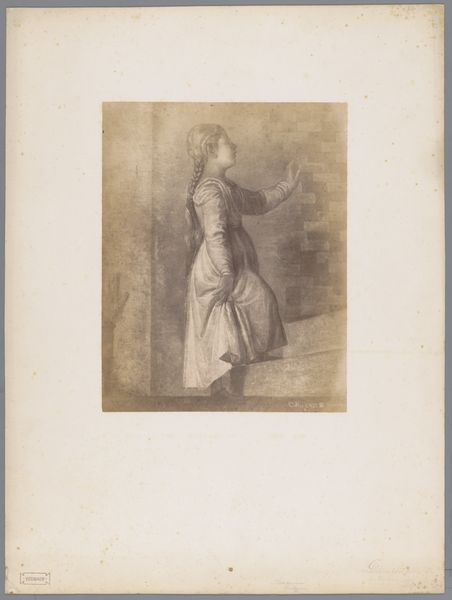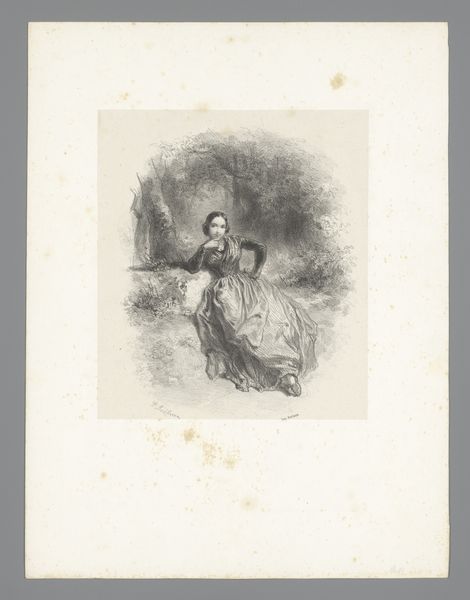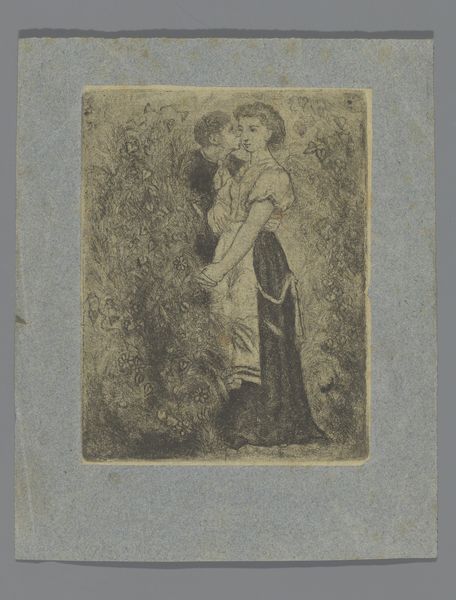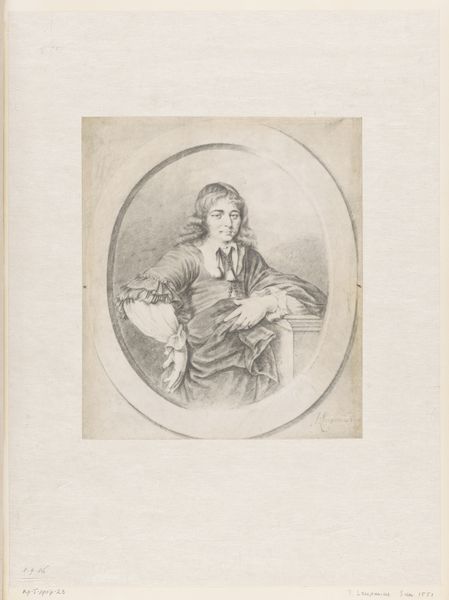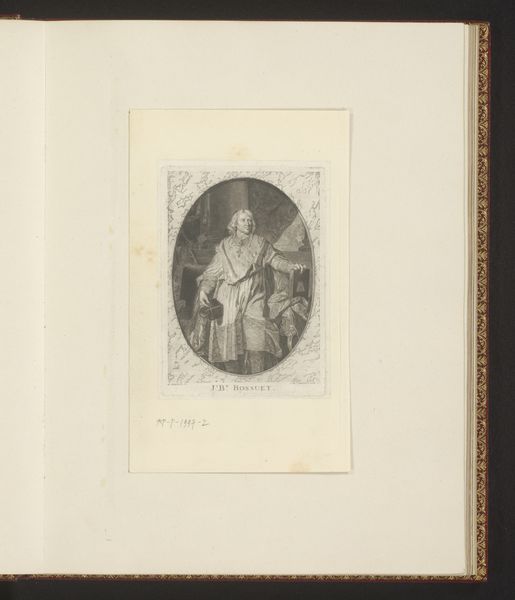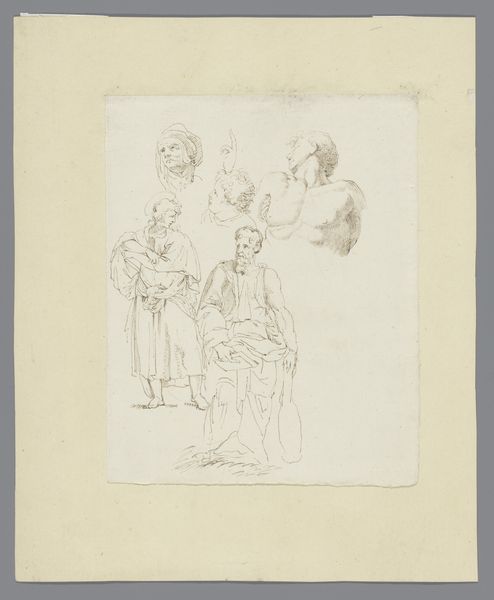
Fotoreproductie van het schilderij Giuditta naar Cristofani Allori in de Galleria Palatina te Florence, Italië 1857 - 1900
0:00
0:00
print, photography
#
portrait
# print
#
photography
#
history-painting
#
academic-art
Dimensions: height 239 mm, width 196 mm, height 358 mm, width 258 mm
Copyright: Rijks Museum: Open Domain
Editor: This is a photographic print from between 1857 and 1900, made by Fratelli Alinari, representing Cristofano Allori’s “Judith with the Head of Holofernes.” It feels very staged and dramatic, almost like a tableau. What strikes you most about this image? Curator: Well, considering this is a photograph *of* a painting, it begs the question: why? What new meaning is created through this process of reproduction? The Alinari brothers were prolific, documenting artworks across Italy. We need to consider this through the lens of labor. Who benefitted from these reproductions? How did they circulate, and for whom? Was this a form of cultural preservation, a commercial enterprise, or both? Editor: That’s interesting. I hadn't thought about it that way. I suppose I was just focusing on the sort of…stiffness of the photograph. Curator: The stiffness *is* telling. It speaks to the materiality of the photographic print itself – a manufactured object produced in multiple. The soft, painterly qualities of Allori’s original are almost flattened, subsumed by the reproductive process. This raises questions of authenticity and value, doesn’t it? Who then 'owns' this image? Is it Allori, the Alinari brothers, or even the consumer of the print? Editor: So, instead of just seeing it as a simple reproduction, we should think about the complex processes involved in its creation and distribution. Curator: Precisely! And how that shifts our understanding of both the artwork and the act of viewing. The materiality here opens up a whole world of socio-economic and historical analysis. Editor: I see that! Thinking about its creation and distribution opens it up in a new way. Curator: Absolutely. It moves beyond a simple aesthetic judgment and delves into the material conditions of artistic production and consumption. A good reminder of the importance of that wider context.
Comments
No comments
Be the first to comment and join the conversation on the ultimate creative platform.
